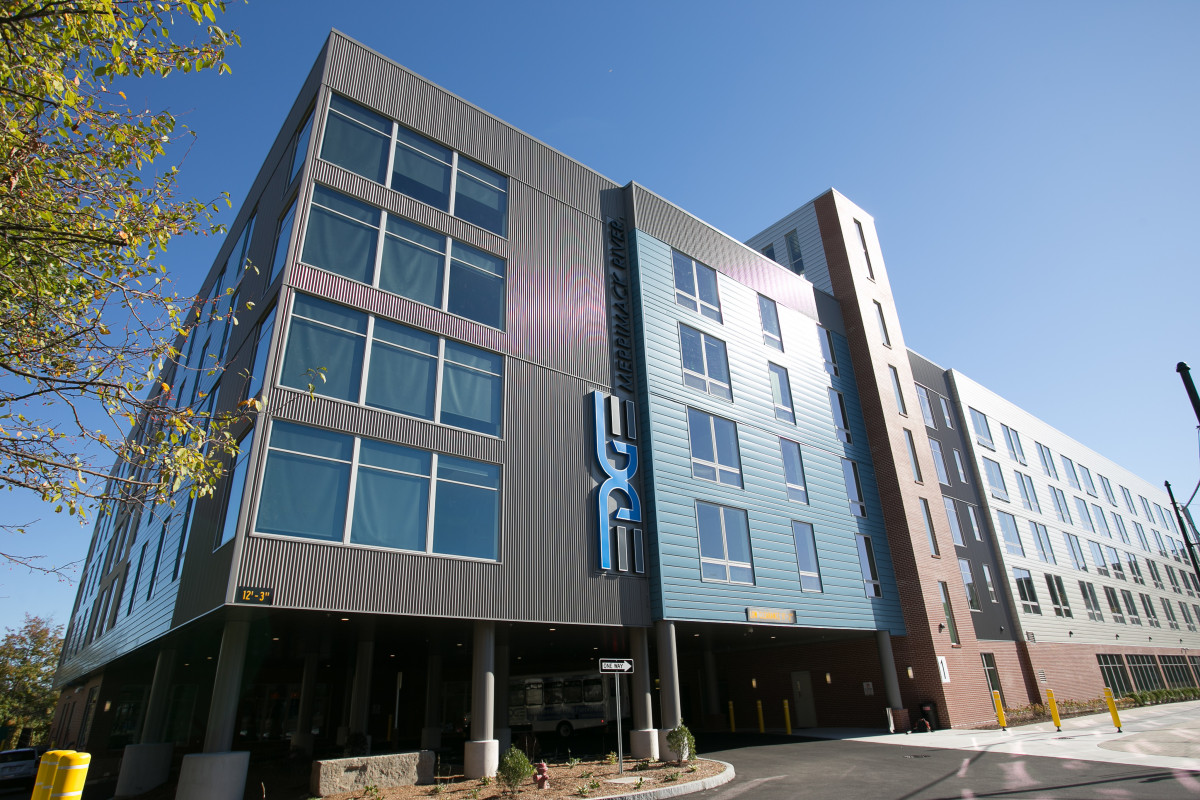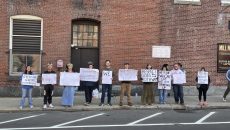(Photo courtesy of Edge Merrimack River) “Large and brand new apartment buildings effect gentrification heavily.”
Lydia Robert
Connector Contributor
Since the urban sprawl of the 1960s, city developers have been attracting Americans back to cities by changing the character of old and blight-ridden city streets. The shiny new storefronts and chic coffee spots attract more affluent groups of Americans, particularly those who are young and looking to experience the bustle of city life. The goal of city developers bringing in more affluent families from the suburbs has worked, particularly in recent years, which is good for economic growth but sometimes bad for lower-income families. Lowell residents have recently seen an uptick in renovating abandoned stores and repurposing mill buildings, and the word gentrification has gained momentum. However, gentrification has seemingly taken on multiple definitions since it was coined in the 1960s. Professor of Economics at UMass Lowell, Anne Rhoads, said, “Before we can state whether or not gentrification is or is not occurring in Lowell, we need to define what we mean by gentrification.”
Economically, gentrification can be examined by viewing a city’s median household income. If an area has been highly gentrified, the median income will be high because more affluent families dominate the region. In a map Rhoads provided from the Opportunity Insights website, the median household from 2012-2016 was $52,000 yearly in Lowell. Based on the data from 2012-2016, Lowell’s median household income was below the national average of $57,600 in 2016. Due to the low median household income and varying other factors such as low population, Lowell is considered a “gateway city,” which means that “the state tries to push a lot of resources to [Lowell] because there are opportunities for redevelopment, there are larger urban centers, there are employment opportunities – there’s a lot of public resources,” said former Director of Economic Development (2017-2019), Andrew Shapiro. Shapiro emphasized that Lowell, like all cities, promote the most economic growth by attracting “a diverse group of socioeconomic” residents. By incorporating a diverse demographic of residents in a city, the city is more likely to survive and have less gentrification. Lowell can afford to attract different socioeconomic groups as the mill buildings converted to housing are sold as mixed-income. But, if Lowell decides to use those spaces as luxury apartments, the city becomes less liveable for lower-income families and, therefore, more gentrified. Lowell has also repurposed the mill buildings as valuable resources for the community, such as the Lowell Community Health Center (CHC). The Lowell CHC “serves many people who are in environmental justice populations,” said Shapiro, making the establishment “a vital need” in for the city.
Like all college towns and cities, students threaten the lower-income housing market. Recently, the class sizes at UMass Lowell have only gotten more significant, with every class holding more first-year students than the last. However, UMass Lowell’s innovation hub provides an abundance of start-up companies that go on to fill more permanent offices, therefore creating more job opportunities in the city. Even without the innovation hub, the university provides jobs for Lowell residents. UMass Lowell will positively impact Lowell as long as student housing does not take priority over housing low-income residents.
Every community needs economic growth, whether it be through new jobs or more opportunities for businesses to grow. As long as Lowell continues to attract diverse groups of socioeconomic residents, repurpose unused mill buildings, utilize the economic benefits of UMass Lowell and keep the median household income fairly low, the adverse effects of gentrification can be minimized. The conversation about gentrification is more than the decision to add a high fashion store to an abandoned storefront. It is about leaving space for residents who have been rooted in the city of Lowell for decades and embracing families who have disposable income to put into local businesses or young entrepreneurs that can create jobs for the community.
An earlier version of this article contained a photo of a converted mill building, falsely accusing it of gentrification.




